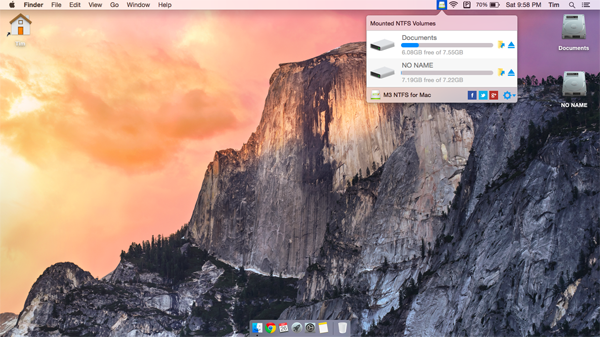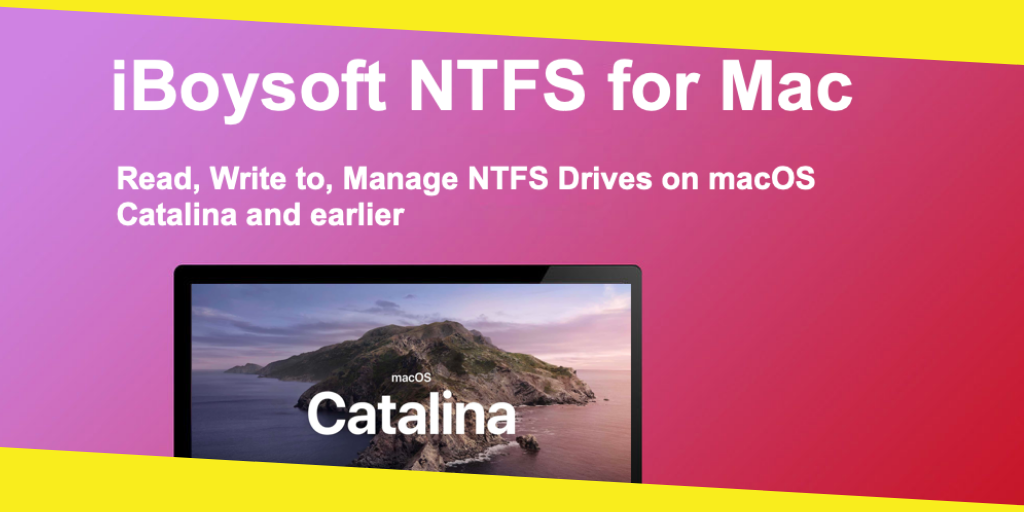Macbook Read Ntfs
- How to manually enable NTFS read and write in OS X. Do you have an external hard drive formatted to NTFS that you would like to use with your Mac? You can do so without using any third-party software.
- Paragon NTFS 15.6.17 - Provides full read and write access to Windows NTFS drives in macOS. Download the latest versions of the best Mac apps at safe and trusted MacUpdate.
Sep 21, 2020 • Filed to: Solve Mac Problems • Proven solutions
Hi, I've tried various solutions (Paragon, -3G) to get my Macbook Pro to read/write to external USB NTFS disks, about the best seems to be Paragon, however it's functioning seems random, sometimes it works, sometimes it doesn't. It almost always seems to work if the disk is inserted at start. Automatically Mount Drives with NTFS-3G. To automatically mount drives in read-write mode, you’ll need to replace Apple’s default NTFS program with NTFS-3G. This will automatically mount the NTFS drives connected to your Mac each time you boot it up. In order to make this work, you must disable System Integrity Protection (SIP) on your Mac.
NTFS (New Technology File System) is the file system used for depositing and recovering files on a hard disk. If you want to write a Boot Camp partition on your Mac system, you should use exFAT since Mac’s operating system is already wired to read that.
Part 1: Free Ways to Write to NTFS Drives on a Mac
Mac can read but not write to NTFS drives on a Mac, however, there are solutions. Atom software download.
1. Third-party drivers (FREE):
Although this method requires some involving activities, you can get it to work. How to make apple pages into pdf. What is apple touch id on macbook air.
- Download and install osxfuse.
- If you don’t have Homebrew yet you will download and install it next.
- Install command-line tools. Go to applications and navigate to utilities from there. Run the command 'Xcode-select –install'. You will see a pop up with the option to install. Choose install.
Open a terminal window and enter the command 'brew install homebrew/fuse/ntfs -3g'. The best mac hard drives for 2018 wirecutter.
- After this, you will move on todisable system integrity protection.
- Once system integrity protection is disabled you should reboot your Mac. As the system begins to reboot, press, and hold command+R. The system will enter into a recovery mode.
- While in recovery mode, open a terminal from utilities and enter the command 'csrutil disable'.
- After that command, you will now reboot your system in the usual way to take it out of recovery mode.
- Once fully operational, open a terminal and run these commands 'sudo mv / sbin/mount_ntfs / sbin/mount_ntfs.original' and 'sudo 1n –s /usr/local/sbin/mount_ntfs /sbin/mount_ntfs'.
- Enable system integrity protection. After this, repeat the same process to press and hold command+R while rebooting the system to enter into recovery mode.
- Enter the code 'csrutil enable'.
- Reboot your Mac to normal mode and you should be able to write to NTFS drives on a Mac now.
Safari 4 0 5 download for mac. If you ever wish to reverse the entire process, you would need to disable system integrity protection ad run these commands right after 'sudo rm /sbin/mount_ntfs' and 'sudo mv /sbin/mount_ntfs.original /sbin/mount_ntfs' and 'brew uninstall ntsf-3g'.
You can uninstall osxfuse from the system and remove it completely from the system panel. Enable system integrity protection after the uninstall.
The operating system of Mac has experimental support for writing NTFS but this is automatically off and has to be turned on by some steps. This method is the least tried and the least stable. It is in no way guaranteed and if it does not work it is not the fault of the instructions. It just does not work sometimes. Also if does not work, it could generate an issue for you in the future with writing NTFS.
- To make the process easier you should change the drives word label to single word label if it has not been done already
- Open a terminal by going to applications then utilities and open a terminal. Enter the command 'sudo nano /etc/fstab'
- Add the command 'LABEL=NAME none ntfs rw,auto,nobrowse' to nano and name the file what you want by replacing NAME. If you want to write more than one ntfs file you can do so by adding a different command for them like the one above.
- Press and hold control+O to save the file or files and control+X to close nano.
(If you want to write to multiple NTFS drives that you have, just add a new line for each drive.)
If the drive is connected to your Mac, then disconnect it and connect it again. Go to the finder, click on go then select go to folder and type '/Volumes'.

If this was Windows, you would find your missing USB drive in Windows by now. But Windows writes on NTFS automatically without these steps so it will be easy to find your missing USB in Windows.
Part 2: How to Recover Data from NTFS Drive
If your data in NTFS file is lost during any of the above-mentioned processes, you can recover it using a hard drive data recovery software. We recommendRecoveritData Recovery. This data recovery tool will recover data from NTFS drives. If you connect your USB device and you cannot see it you can follow our steps to find your missing USB drive in Windows and follow the simple steps to recover data from NTFS drives.
Download and launch Recoverit on your Mac and follow the next simple steps to perform Mac hard drive data recovery.
Step 1To recover lost data from your NTFS hard drive on Mac, select your Mac hard drive where your data gets lost and click 'Start' to have a scan on your NTFS drive.
Macbook Read Ntfs App
Step 2The scan will require a little time to finish searching for lost files. The scanning procedure will be displayed in real-time.
Step 3 Apple 10 6 4 combo update. After scanning, you can preview the recoverable files, select the desired ones, and click on 'Recover' to get them back.
A Mac can read NTFS files but cannot write on them. This can be changed by using some free third-party apps that can easily be downloaded, installed, and used on a Mac to write NTFS. Apple also has experimental NTFS write support. You can make use of this for writing NTFS on Mac.
What's Wrong with Mac
- Recover Your Mac
- Fix Your Mac
- Delete Your Mac
- Learn Mac Hacks
With the much-awaited launch of macOS Sierra, we’re pleased to announce that Tuxera NTFS for Mac 2016 is now available! Macworld has a great overview of the new features in Sierra, so be sure to check them out if you’re not quite up to speed. For us, two interesting improvements stand out. One is Sierra’s new Optimized Storage. This new feature frees up storage space on your Mac by automatically moving rarely used files to iCloud. This of course requires you to buy a subscription for iCloud storage if you need more than the free 5 GB of space you get.

Macbook Read Ntfs
Another new development is Apple File System (APFS), which starting in 2017, will replace the decades-old HFS+. APFS is scalable from Apple Watches to Mac Pros, and should bring better interoperability between all Apple products. Numi 3 24 coupon. It’s also more secure and reliable than HFS+. Although APFS won’t ship in Apple devices until next year, we’re keeping an eye on all the latest developments.
Tuxera NTFS for Mac 2016 brings support for Windows drives to macOS Sierra
As with previous versions, Tuxera NTFS for Mac brings full read-write compatibility with Windows NTFS-formatted drives to your Mac. Our software makes it possible for you to access, edit, store, and transfer files hassle-free. It supports macOS Sierra, OS X El Capitan, and all previous OS X versions from 10.4 (Tiger) onward. If you aren’t upgrading to macOS Sierra, we still recommend upgrading Tuxera NTFS for Mac for all the latest features and improvements.
If you don’t have a license for Tuxera NTFS for Mac, it’s a convenient, one-time purchase valid for the entire lifetime of the software! Visit our product page to buy the software or download and try it free for 15 days. If you have any questions or feedback, our support team is happy to help. Get in touch at macsupport@tuxera.com.
Can Macbook Read Ntfs Drive
Thanks for your valued feedback
Back in June, we launched a release candidate for Tuxera NTFS for Mac 2016. We’d like to extend our thanks to those of you who downloaded the RC version and sent us feedback. With your comments and suggestions, we’ve been working on improvements for today’s release. For a summary of all major changes and improvements to our NTFS driver for Mac, visit the release history page.
Macbook Read Ntfs Usb
Get the latest version of Tuxera NTFS for Mac here:
Macbook Read Ntfs
UNDER MAINTENANCE